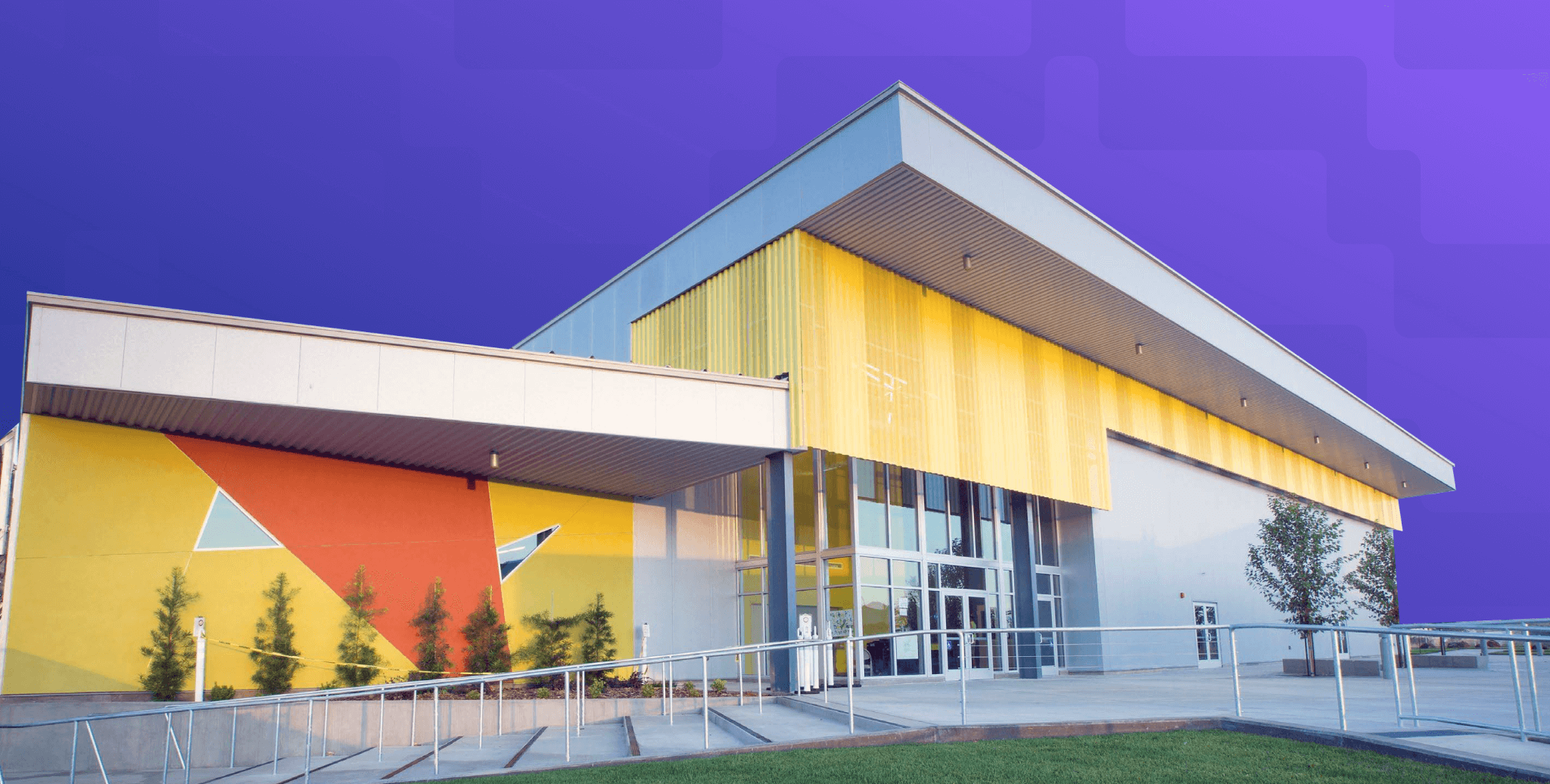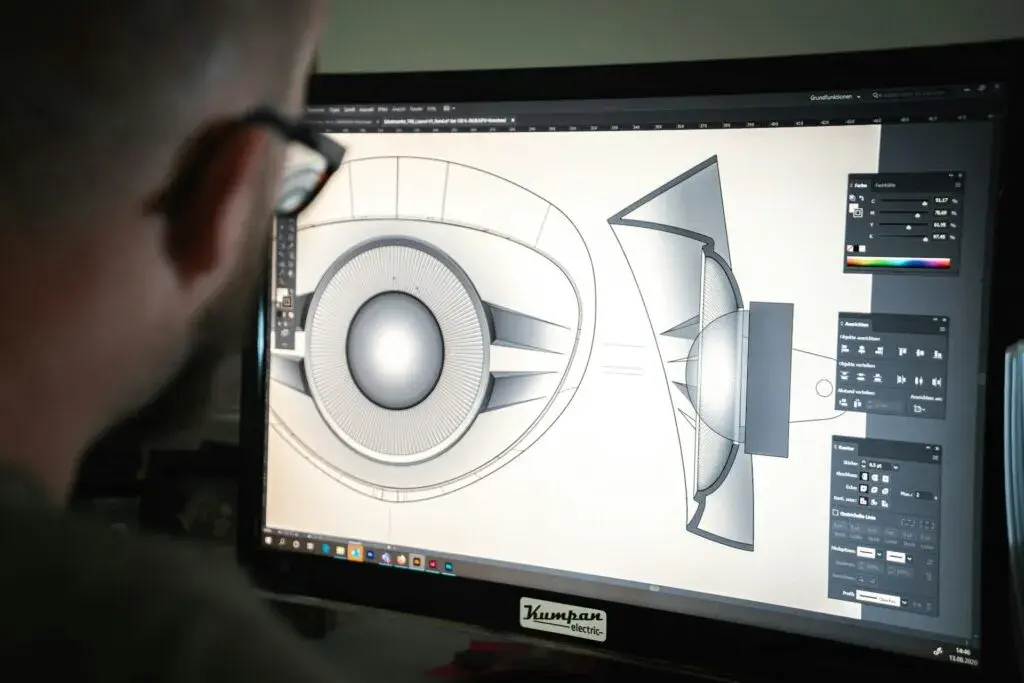A Brief History of the Evolution of Computational Design

Table of Contents
Computational design is a process that uses algorithms and parameters to solve design problems with advanced computer processing. It leverages algorithms and human & artificial intelligence to produce multiple iterations of a design to find efficient design solutions - both functionally and visually. With computational design, architects can design faster with fewer iterations, improve productivity and accomplish more with fewer resources. It empowers architects to bring gravity-defying impressive designs to life.
But, computational design is not the product of a EUREKA moment. It is the culmination of decades of evolution in design and creativity, technological innovation, and the want for more efficient design solutions. Starting from the 2D drafting era to the current decade where digital takes precedence over analog, design methodologies and tools have undergone monumental changes.
The Evolution of Computational Design in Architecture
The evolution of computational design can be mapped out in 5 stages –

Stage 1: 2D Drafting
In 1963, Ivan Sutherland, the father of computer graphics, introduced the revolutionary Sketchpad to the architecture and design world. Sketchpad – the original Computer-Aided Design (CAD) system – is a highly-interactive program that enabled users to draw and design on the computer display in real time. For the first time in history, drawings could be edited, stored, and used for future purposes using a computer.

Ivan Sutherland using his Sketchpad
Albeit a constraint-based model, Sketchpad was the first manifestation of computational design in architecture. Twenty years later, AutoCAD came into the picture to visualize designs in 2D. Compared to Sketchpad, AutoCAD was more accessible and affordable and hence found a dedicated following among architects and other AEC industry professionals.
Stage 2: 3D Modelling
The 1990s ushered in the first digital turn in architecture with the arrival of the 3D modelling stage of computational design that involved 3D model-making. At the advent of this stage, blob architecture took precedence – a post-modern architectural style that involved designing amoeba-like, free-flowing buildings.
Although the term “blob architecture” was coined by architect Greg Lynn in 1995 after he used blob in his design experiments with ‘Metaball Graphical Software,’ the term “blob” was first used by Czech-British architect Jan Kaplický for the "Blob Office Building" in London in 1986. Soon after, it gained popularity among many architects and product designers who created unique and unusual blob-like designs.

The Kunsthaus Graz in Austria
In the digitisation era, tools like Rhinoceros, Cobalt, 3D Studio Max, and Maya entered the market and empowered architects to create 3D visualizations of designs and solve complex geometry to give architecture a new dimension.
Stage 3: Building Information Modelling (BIM)
Although mentions of the ‘building model’ made its appearance in multiple writings as early as the mid-1980s, ‘Building Information Modelling” as a term first appeared in a paper by G.A. van Nederveen and F. P. Tolman in 1992. Its acronym ‘BIM’ gained popularity in 2002 with Autodesk releasing a whitepaper on it.
This stage elevated design technology to a higher level by enabling visualization beyond just 2D and 3D. It allowed the addition of physical properties to the 3D model of any proposed built environment with Building Information Modelling (BIM) technology at the forefront.

BIM softwares like Revit, Navisworks, Dynamo, BIM 360, and more, enable the documentation and flow of key information across all the stakeholders of the project. This aids in designing precise plans with un-hindered collaboration between clients, designers, architects, MEP engineers, HVAC industry professionals, etc.
Stage 4: Algorithm-based Computational Design
While the first three stages introduced computer-based technologies that revolutionised and streamlined project planning and execution, at this stage, computational design understanding evolved into an instrument that aids both documentation and designing. It goes beyond the bounds of conventional geometry and helps rationalise, create, and analyse multiple design options quickly and iteratively so architects can build environments that were previously inconceivable.
With computational design, architects do not need to draw shapes and plans but digitally encode a set of principles as a sequence of parametric equations whose execution generates the model (or multiple iterations of it).

Common Types of Computational Design

The Vila Olimpica Complex in Barcelona, designed using CATIA in 1992.
Even though the earliest records of explorations into design computation date back to the pioneering works of Nicholas Negroponte and Chuck Eastman among others (1960s and 1970s), it was only with the release of Generative Components (2003) and Grasshopper (2007), that design computation took off in mainstream architectural practices.

International Terminal at Waterloo Station, London built using I/EMS mechanical modelling software.20 in 1993
Parametric Design, Geometric Rationalization, Generative Design, Form Finding, Network Analysis, Programmatic Analysis, GIS, Solar Access, and Daylight analysis are the products of this development stage of computational design.

Popular Computational Design Tools
Stage 5: Machine Learning
While algorithmic computational design stage entailed designers and architects encoding a set of principles each time to create design output, Machine Learning (ML) takes it a step further. Through training, analysis and application - the 3 steps that it follows - machine learning lets computers generate designs based on past inputs and statistical models prepared on the inputs. It combines a range of algorithms, pattern recognition, neural networks, generative design, AI and distributed computation to change the way architects build and even conceive designs.

Futuristic designs using Computation by Hassan Ragab
How Computational Design is Being Used Today
Whether it is a commercial or a residential project, healthcare, hospitality or urban design redevelopment, computational design is being used widely across every vertical in Architecture, Engineering and Construction (AEC) to create efficient designs and find optimum design solutions otherwise unfathomable.
Some prominent projects across the globe that have leveraged computational design to produce mind-bending built environments are El Peix or the Golden Fish Sculpture in Barcelona (1992) by Frank Gehry; the International Terminal at Waterloo Station in London (1993) by Grimshaw; the International Migratory Bird Town Convention & Exhibition Center in China by OI Architects; Museum of The Future in Dubai by Killa Design architects, The Line by US studio Morphosis, and One Thousand Museum by Zaha Hadid in Miami among many others.
One of the more recent examples is the Al Janoub Stadium re-designed for the 2022 FIFA World Cup by Zaha Hadid Architects (ZHA). Inspired by the traditional Dhow boats, the stadium features a curvilinear, retractable roof that resembles the sails of a boat. Passive design principles, computer modelling, and wind tunnel tests were used for optimum player and spectator comfort in the stadium enclosure. Optimizing building performance and sustainability were kept at the forefront.

Al Janoub Stadium, Qatar
The Al Janoub Stadium is a perfect example of how computational design is being used today to create surreal experiences that create a perfect confluence of design, culture, nature, and sustainability – a visual, structural, and functional masterpiece.
Conclusion - The Way Forward
As you can see in the stages of evolution laid out above, computational design is not a product of a single EUREKA moment. More than half a century of technological innovation and drive to create better designs culminated in its incremental development. Achievements and milestones of one stage fed into the other and ultimately produced the construction tools and technologies we know today.
What sets computational design apart from other tools and methodologies is its ability to effectively reduce effort and increase output. In a few clicks, multiple designs of the same building or project are produced with varying contexts and complexities. Architects can focus on building environments that not only defy the laws of gravity and challenge conventional geometry but also are in perfect confluence with the existing built environment, culture and nature.
Even today, the AEC industry has not realized the full potential of computational design. With accelerated adoption, algorithms and AI will become sophisticated and display more intelligence in every output.
The future of AEC is Computational Design. Where do you fit in?

 Thanks for connecting!
Thanks for connecting!
.jpg)
-2.png)
%20(1).png?width=767&height=168&name=MCD%20B%20(Course%20Banner)%20(1).png)
.png)

.png)


.jpg)


